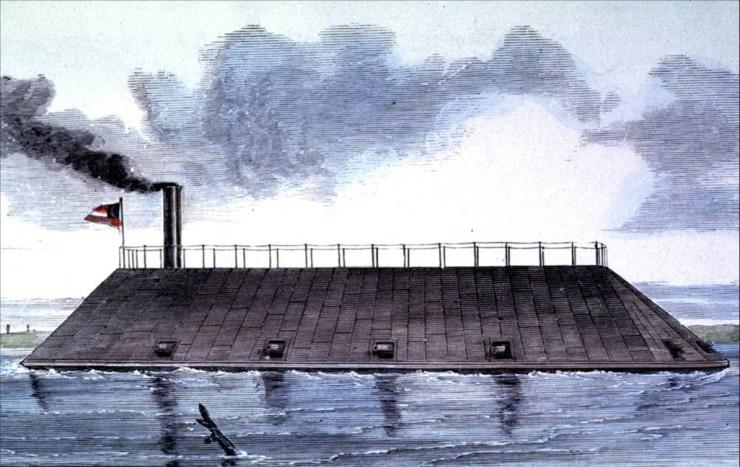Past and Present: The CSS Georgia

The ironclad warship was developed during the American Civil War. With its ability to withstand enemy fire, it quickly replaced the wooden ships of wars past. The CSS Georgia, built in 1862, was one such vessel. From its initial design to its current preservation, the CSS Georgia has a unique and intriguing story.
As fathers and sons left their homes to join the rapidly-growing Confederate army, the mothers and daughters left behind felt the need to aid in the war effort. The Ladies Gunboat Association, formed by two Macon women in Georgia, began a statewide campaign to build an ironclad vessel. As fear of a Union invasion of the Georgia coast intensified, the women in Savannah raised over $115,000 to build the warship. A citizens’ committee led by local businessman Alvin N. Miller developed the boat’s design. Miller, who owned a machine- and ship-building operation, volunteered to build the vessel.
The initial design called for an outer layer of rolled iron plating, but due to an iron

shortage the ship was instead covered with overlapping rails gathered from local railroad tracks. All this added weight proved too much for the ship’s engines, which were too weak to power the CSS Georgia through the powerful Savannah River tides. This ship was anchored near Fort Jackson as a floating battery.
The position of the CSS Georgia, along with a multitude of river obstructions, protected the city of Savannah from a Union

naval approach. It wasn’t until General William T. Sherman’s “March to the Sea” in 1864 that Savannah finally surrendered to the North. Just before the white flag was flown, Confederate Lieutenant General William J. Hardee decided to scuttle the CSS Georgia near Fort Jackson to prevent the Union from capturing and using the ship for its own cause. The Lt. General then retreated from the city with his small army into South Carolina.
The CSS Georgia may have experienced little action throughout the war, but its story continues on until 1864. While most people view History as a subject solely concerned with
the past, it is in fact as much a part of the present world as it is a part of the previous. In 2012, the United States Army Corps of Engineers Savannah District began a project to deepen the Savannah River Channel. Realizing that the project would destroy the wreck site (which appears on the National Register of Historic Places), the corps decided to hand the site over to archaeologists.
The undertaking that followed became the largest excavation project of its kind in the

United States. Underwater archaeologist Dr. Alexis Catsambis worked tireless to recover the Civil War vessel. “The recovery of the remains of CSS Georgia is a testament to the dedication of the [Department of Defense] to the preservation of its submerged cultural resources and to its investment in facilitating economic development, in this case, the Savannah Ga., region,” he said.

The artifacts recovered from the wreckage are currently undergoing conservation treatment at Texas A&M University’s Conservation Laboratory. When the process is complete, the artifacts will be accessioned and placed under the care of the NHHC Archaeology and Conservation Laboratory and the Collection Management Facility in Richmond, Virginia. Ideally, the recovered items will be used in exhibits in multiple museums in the Savannah area and in other facilities nationwide. From the inspiring tale of the Ladies Gunboat Association to the rise of the vessel from the murky waters of the Savannah River, the recovery of the CSS Georgia is bringing history to life.